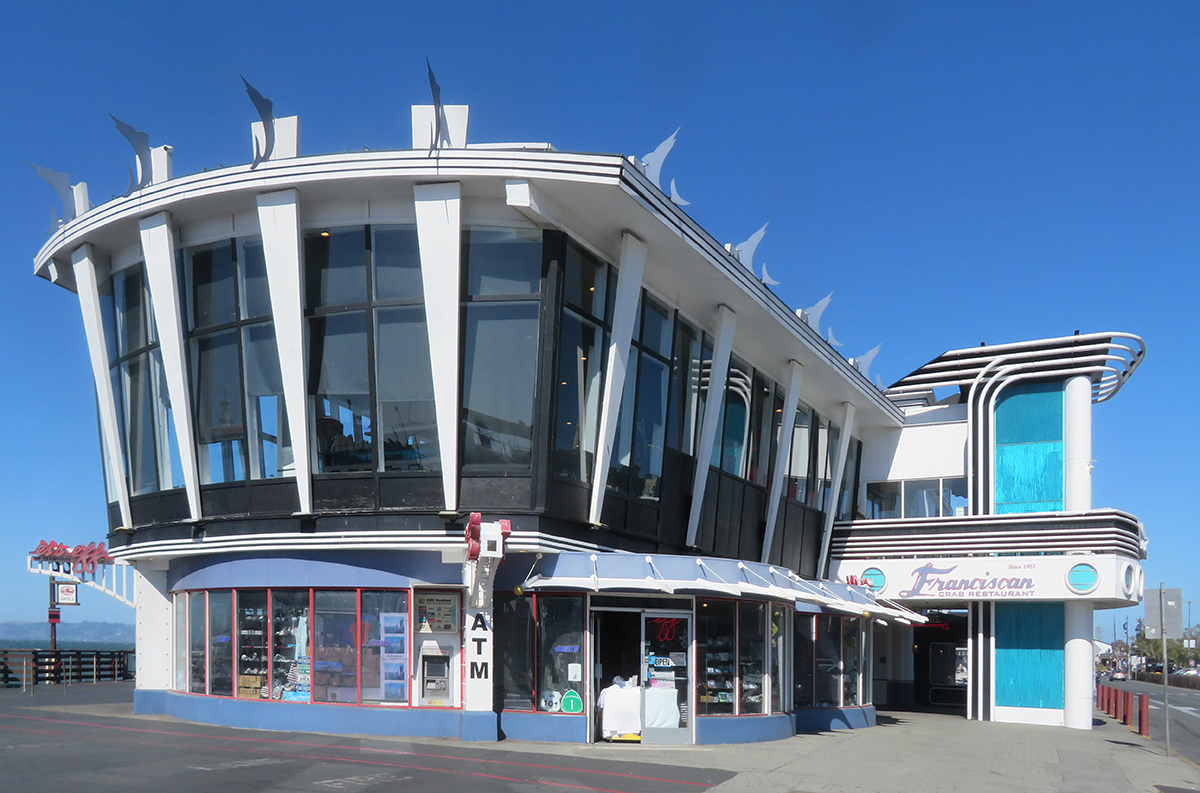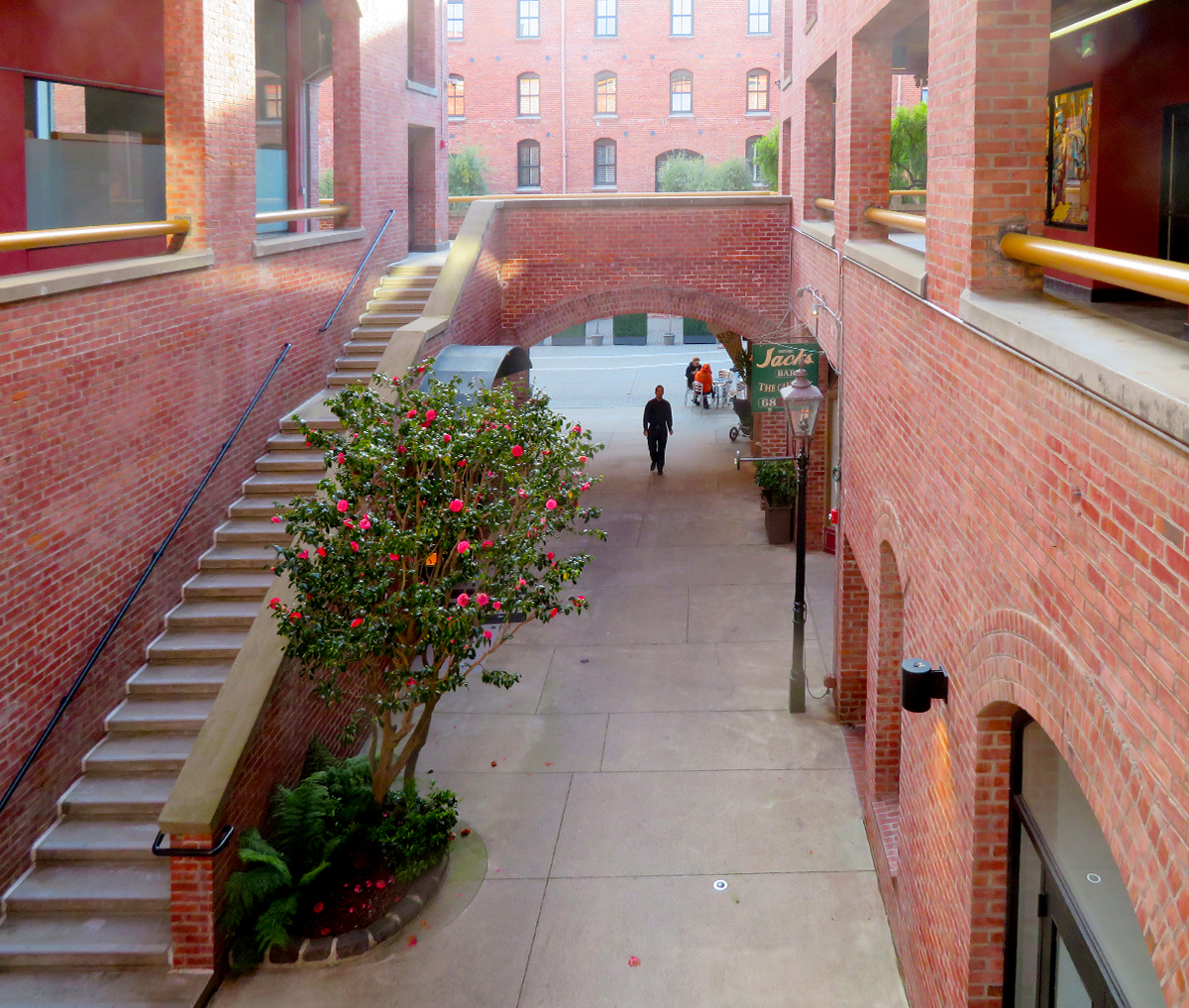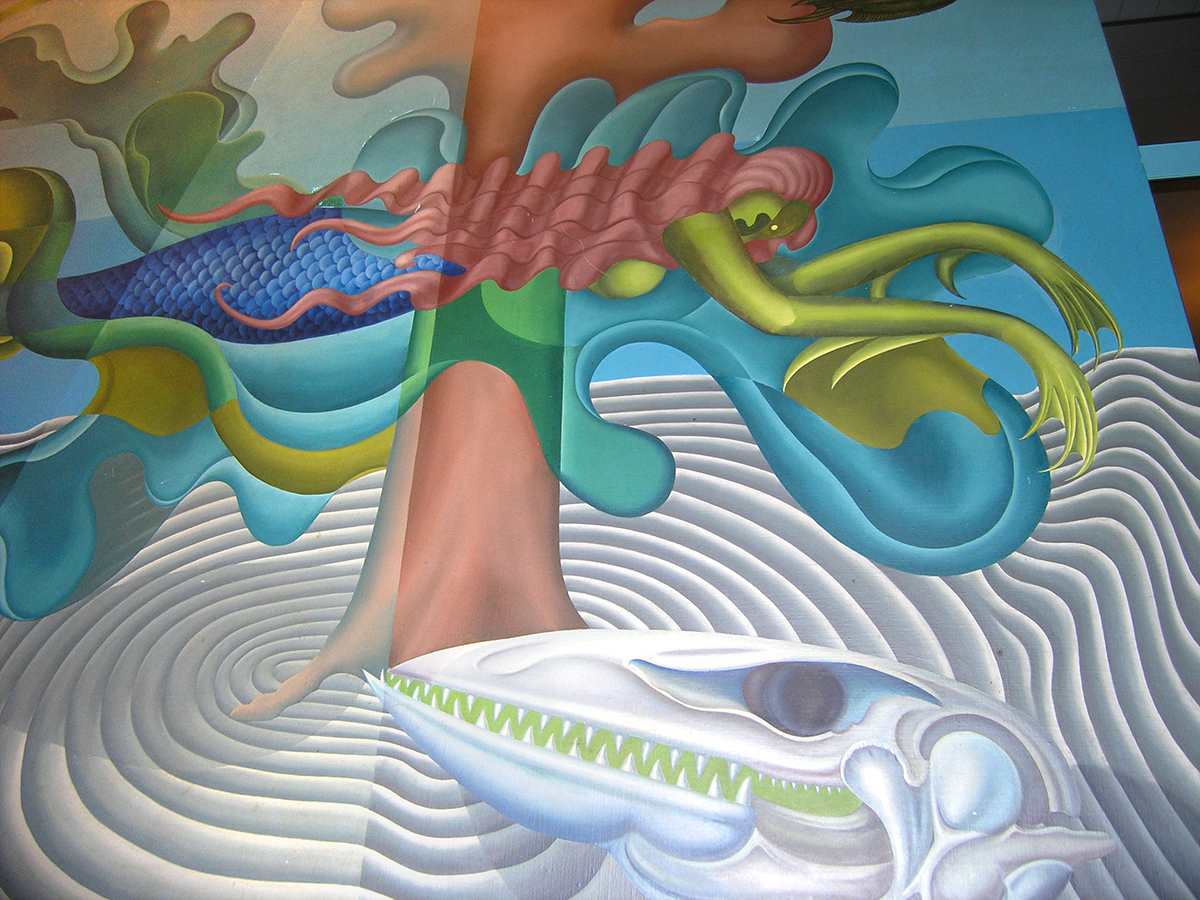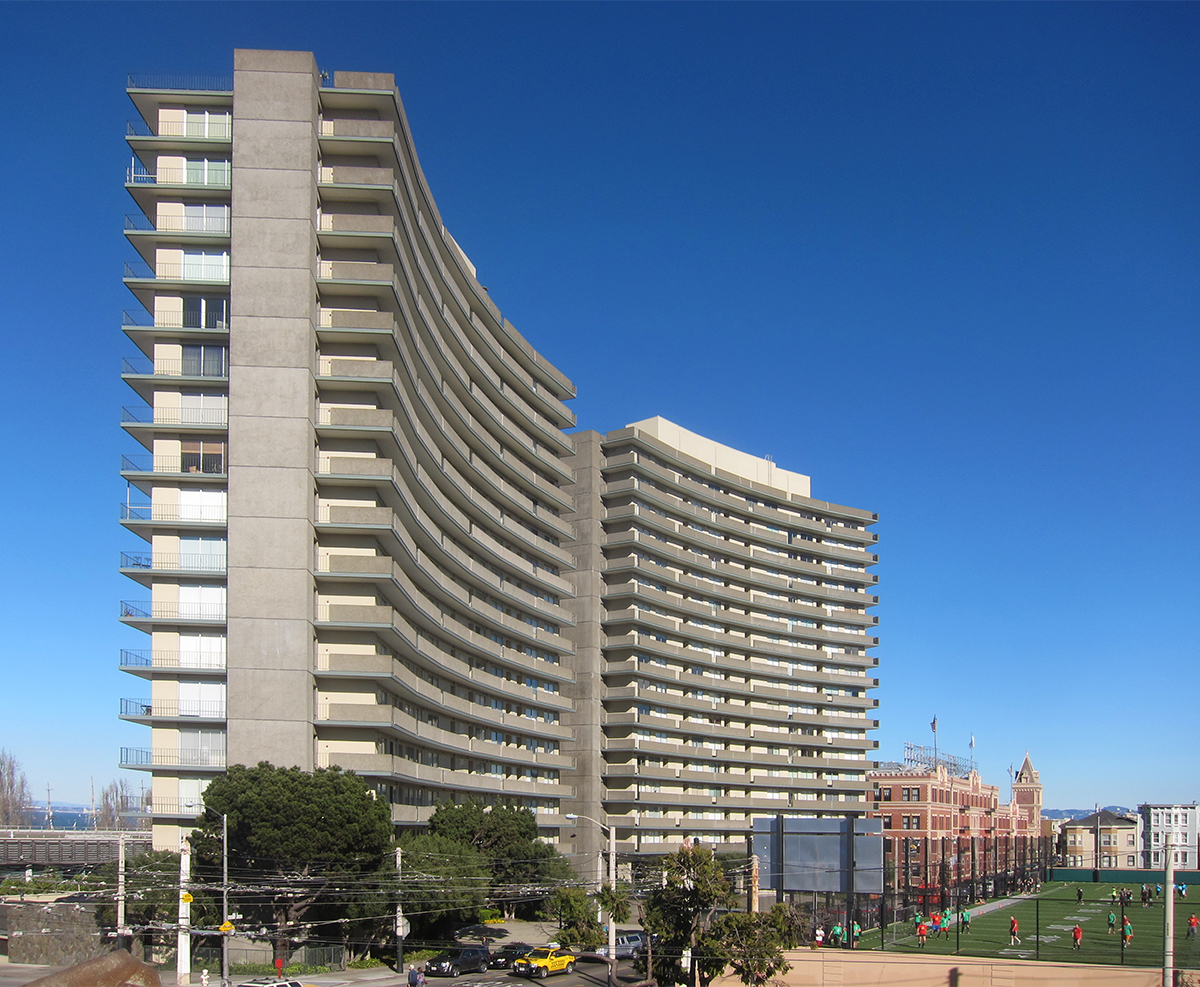
How Modernists Restored the Waterfront
 |
You’ll find sourdough loaves scooped out to form bowls filled with clam chowder, Dungeness crabs aplenty, the antique F streetcars from around the world, shops crammed with models of the Golden Gate Bridge, and you will hear sea lions roar.
If you look with an educated eye on your visit to one of the world’s most popular tourist destinations, San Francisco’s Fisherman’s Wharf, you will also enjoy surprising examples of modernist architecture.
These include buildings that show how leading modernist designers were able to take buildings from the past that were threatened by destruction and turn them into marvels that still work for today.
 |
What’s that? You don’t have an educated eye?
Consider then attending ‘Travel & Leisure on San Francisco's North Waterfront,’ on Saturday, October 9, 2021, from 10 to 11:30 a.m. Meet at 700-898 Beach St. – after you sign up. Attendance is limited due to Covid; wear a mask.
“It’s a neighborhood that is often written off by locals as a place for tourists,” says Hannah Simonson, an architectural historian and one of the tour leaders. Other tour leaders are Docomomo organizers Barrett Reiter, Sarah Hahn, and Teresa Fok
Simonson is president of the Northern California chapter of Docomomo, an advocacy group for modern architecture. This year, as part of its nationwide tour program, the group is focusing on travel and leisure.
 |
“We were thinking it would be interesting to go to a neighborhood that is very much associated with tourism and perhaps not as frequently visited by locals,” Simonson says.
The city’s northern waterfront, including Pier 39, the Wharf, and beyond, ifeatures buildings that shout out their modernist roots, including the Franciscan Crab Restaurant, which looks like a glass walled ship floating above its seaside pavement.
But much of the tour will focus on some structures that evoke the early 20th, or late 19th century of San Francisco’s waterfront, when tourists were unheard of and life was all about fishing, industry – and a chocolate manufacture.
What are today known as Ghirardelli Square and the Cannery were built as industrial warehouses, including the site for Ghirardelli chocolates. By the 1950s developers were eyeing the northern waterfront for potential highrise projects that would have destroyed many historic buildings and blocked views of the Bay from homes on Russian Hill.
 |
Instead, Ghirardelli Square and the Cannery were converted into shopping and dining Meccas (though uses have shifted over time, especially at the currently rather ghostly Cannery.) Both projects pioneered the idea of turning old industrial sites into active modern amenities.
“The projects were by really prominent local architects and landscape architects,” Simonson says. “They are interesting modernist interventions. It will be different than our other tours, which were of buildings built from the ground up as modernist buildings.”
Ghirardelli Square was designed by architects Wurster, Bernardi and Emmons and landscape architect Lawrence Halprin, the Cannery by architect Joseph Esherick and landscape architect Tommy Church.
The tour starts at a building from a somewhat earlier era, the 1939 Streamline Moderne Aquatic Park Bathhouse, today the Maritime Museum.
Most of the tour will remain outside, though strolling the complex spaces of the Cannery and Ghirardelli Square produces very much an inside-outside sort of feeling.
 |
But at the Maritime Museum participants will enter one of the city’s more magical spaces and will view astounding, and astoundingly strange, murals by Hilaire Hiler and Sargent Johnson, not to mention sculpture by Benny Bufano.
One structure on the tour, the towering and curvaceous Fontana apartments, “doesn’t really figure into travel and leisure,” Simonson says, “but it was a catalyst for discussions about height limits in San Francisco, and about where new development should be placed.”
The paired 17-story towers by El Cerrito architect Paul Hammarberg replaced the historic Fontana spaghetti factory, and San Franciscans shuddered that the Fontana might be the first of a wall of towers along the northern waterfront.
“San Franciscans were not in favor,” Simonson says. “They pushed to preserve and reuse older industrial buildings and to establish the [San Francisco Maritime] national park.”
If the tour proves popular, as it should, Simonson says, Docomomo may schedule a second.
- ‹ previous
- 327 of 677
- next ›



